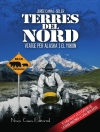In ‘Baddeck, and That Sort of Thing, ‘ Charles Dudley Warner presents a keenly observed travel narrative that weaves together the picturesque landscape of Cape Breton and its cultural nuances. Warner’s literary style merges humor and keen social commentary, reflecting the American preoccupation with the enchanting yet challenging relationship with nature and travel during the late 19th century. Within this context, the book serves as both a personal memoir and a broader critique of the American ethos, demonstrating Warner’s ability to blend anecdotal evidence with pointed observations on society and culture. Charles Dudley Warner, a notable figure in the American literary canon, was deeply intertwined with the literary movements of his time, as a close friend of Mark Twain and an esteemed writer in his own right. His experiences as a traveler and his acute understanding of human folly and societal norms fueled his desire to encapsulate the essence of American life, particularly as it intersected with the great outdoors and the ideals of leisure and exploration. This book is highly recommended for readers interested in travel literature that offers both aesthetic enjoyment and thought-provoking insights. Warner’s articulate prose invites readers to not only embark on a journey through the landscapes of Baddeck but also to engage with his reflections on the broader themes of life, society, and nature.
Об авторе
Charles Dudley Warner (1829–1900) was a prominent American essayist and novelist of the late 19th century, known for his keen observation and skillful blend of humor and realism. Born on September 12, 1829, in Plainfield, Massachusetts, Warner studied law but found his passion in literature. His exploration of society, culture, and travel is documented in his works which transcend the era’s typical sentimentalism, offering instead an astute register of the complexities of American life. One of his notable travelogues is ‘Baddeck, and That Sort of Thing’ (1874), which details his experiences in Nova Scotia and displays his characteristic wit and thoughtful perspective. Perhaps most famous for his collaboration with Mark Twain on ‘The Gilded Age: A Tale of Today’ (1873), Warner’s influence extended beyond his own body of work, as he also served as editor of the Hartford Courant and contributed significantly to the American literary canon. His literary style often merged the narrative finesse of a novelist with the precision of an essayist, capturing the nuances of the landscapes and societies he surveyed with a charm and critical eye that has kept his writings relevant and appreciated by scholars and literary enthusiasts.












